Landscape lighting enhances the appearance of your front yard and backyard while adding value to your property. But after choosing the lighting fixture types, the next challenging task is wiring the units. The most critical part of this process is picking the correct landscape lighting wire gauge for the fixtures. We have looked at lighting wire gauges in detail below to help you calculate the best size for your fixtures. Take a look!
Types of Landscape Lighting Systems
While there are various outdoor landscape fixtures, there are only three landscape lighting systems.
Solar
The light fixtures in this system get their power from batteries charged by solar cells throughout the day. They are easy to install because they don’t need wiring. You should only ensure to place them in areas with direct sunlight because they need about six to eight hours of direct sunshine to recharge.
Line Voltage
These landscape lights run at 120V, the same voltage running through your home appliances. They require a junction box to connect to the electrical wiring system and a conduit to protect the wires.
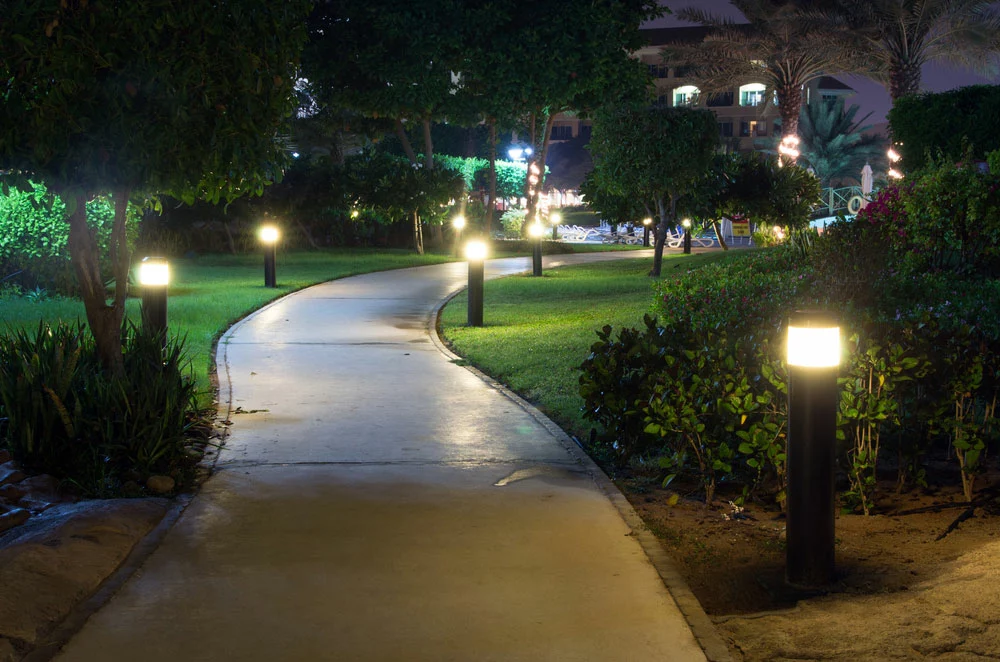
Landscape lighting in a garden
Low Voltage
Low-voltage landscape lighting systems require a transformer to step down the line from voltage from 120V or 220V to 12V. They are energy efficient, safe to use, and easy to install because they plug into a GFCI outlet.
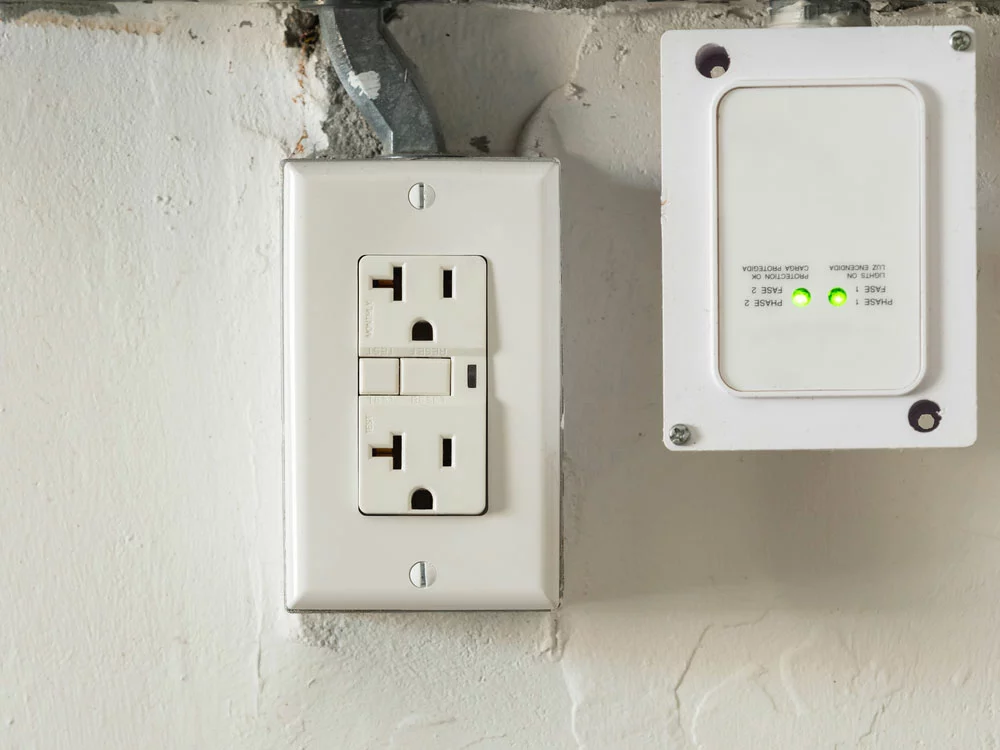
A GFCI outlet
Wire Size Chart for Low Voltage Landscape Lighting Systems
Lighting cable gauge labeling is unconventional because the lower the number, the thicker the wire. Therefore, low gauge wires have a higher electrical current transmission capacity over long distances.
Measured in American Wire Gauge (AWG), this gauge number refers to a specific wire thickness in inches or millimeters.
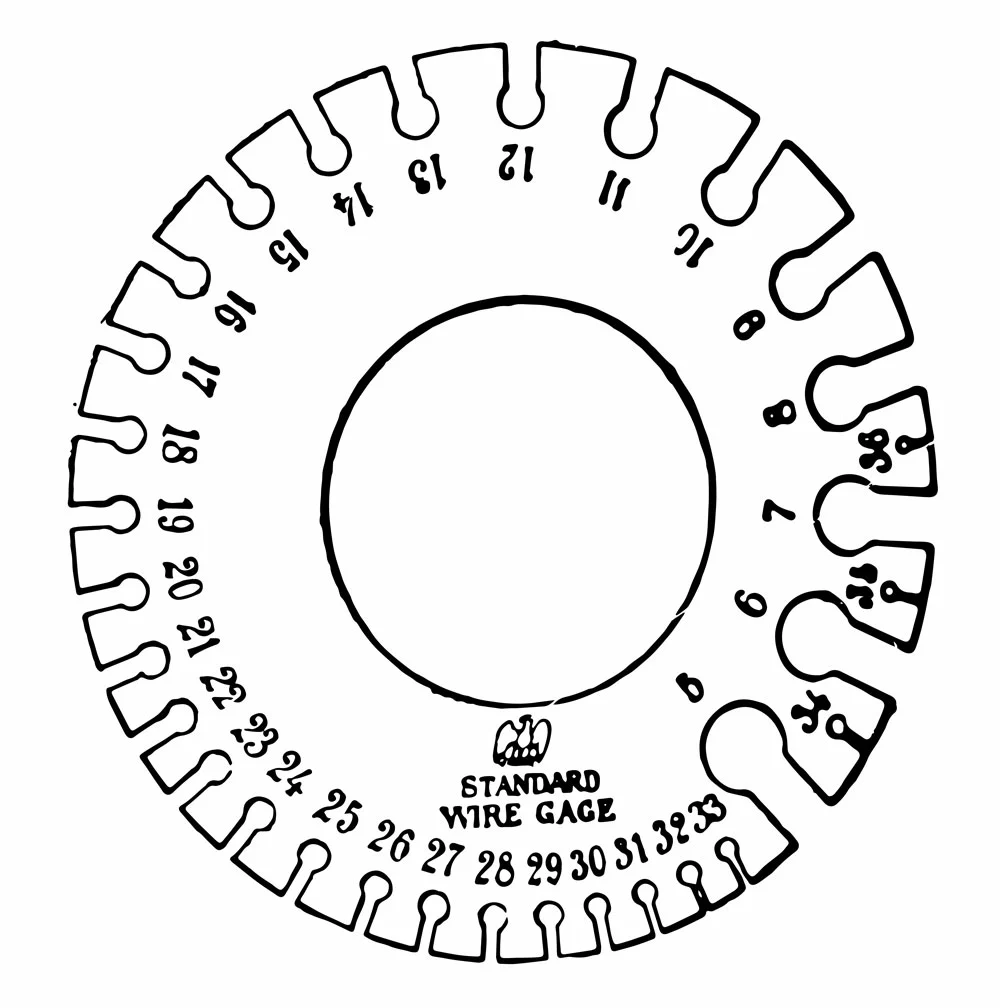
An illustration of a wire gauge used to measure electrical wires and guitar strings.
The thickest wire has a 0000 rating. It is 11.7mm (0.46 inches) wide. Next is 000, then 00 followed by 0. After these, we go to the typical 1-26 AWG rating, with 26 being the thinnest.
Some wires can have an AWG rating with a slash and number, usually two. For instance, you can have 18/2, 10/2, or 8/2. The number after the slash indicates the number of conductors in the wire.
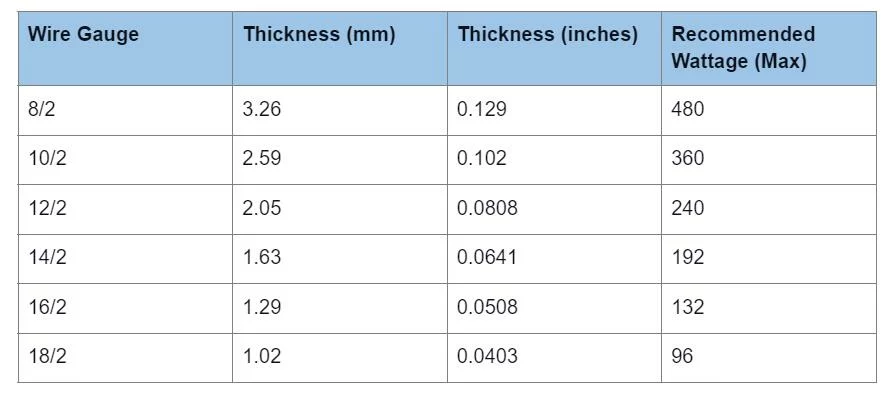
Besides having a higher wattage capacity and lower voltage drop, thicker wires are more expensive and less flexible. Therefore, running multiple thin cables from the transformer might be better than using one thick wire.
For instance, if the entire lighting system draws 400W, it might be better to install two 12/2 AWG circuits than one 8/2 AWG circuit.
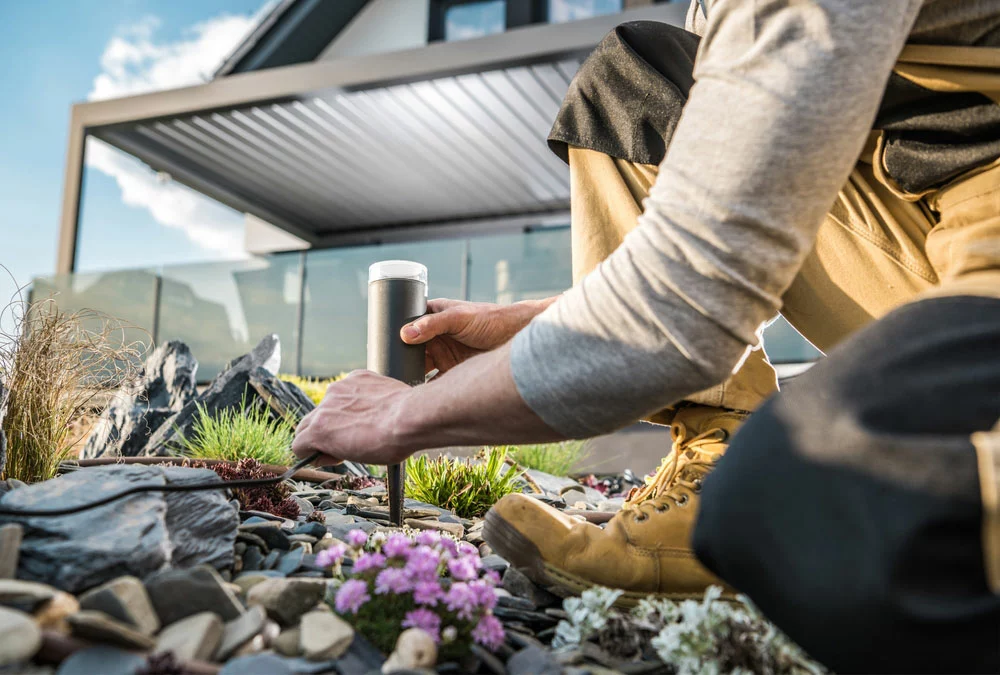
An 8-gauge copper wire
Transformers and Landscape Low Voltage Lighting Cable Gauges
The transformer can also dictate the wire you use. If its maximum wattage rating is 200W, there is no point in connecting it to a 10/2 AWG wire.
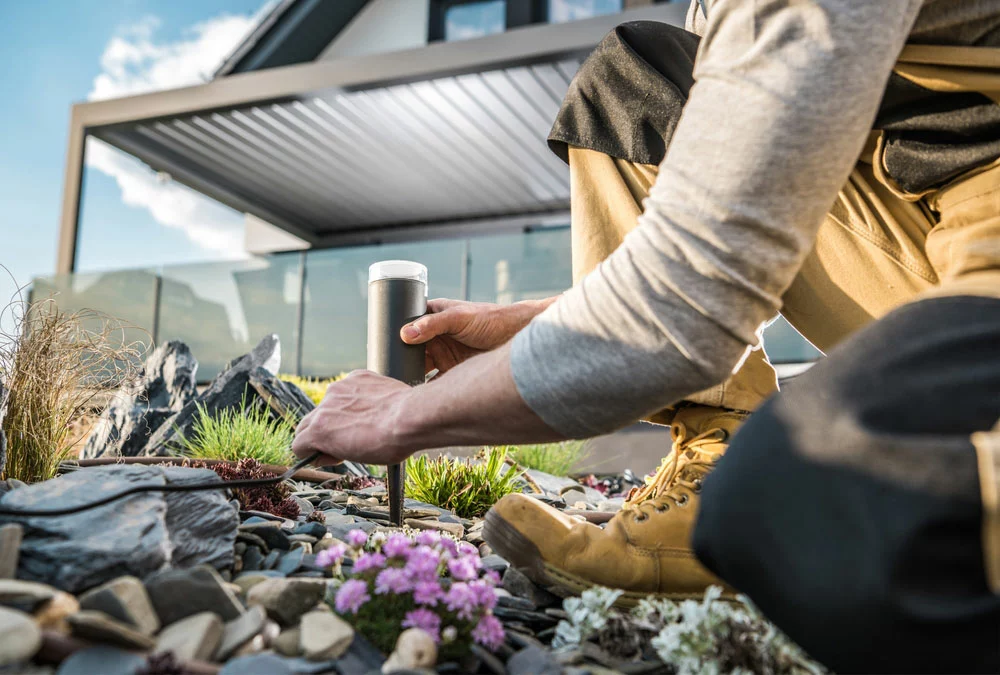
A 12V landscape light installation
But since the transformer can have power fluctuations, we recommend getting wires that can handle 80% of its max wattage rating. You can use the following table as a rough guide for wiring the outdoor lights.
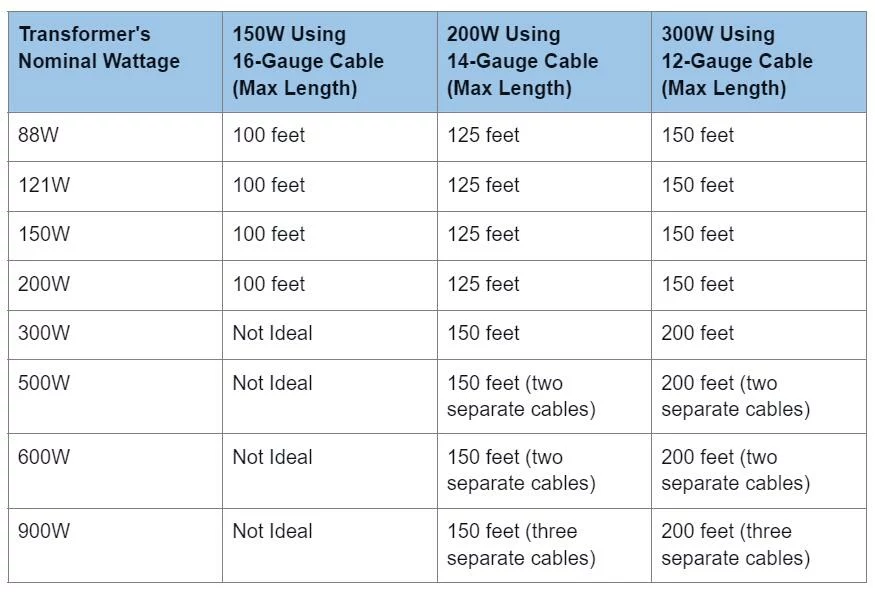
Typical wire sizes for low voltage landscape lights include 16, 14, 12, 10, and 8-gauge. The longer the distance between the transformer and lighting fixtures, the higher the resistance, leading to a voltage drop issue. Therefore, we recommend 12-gauge or 10-gauge wire for long distances to avoid voltage drops.
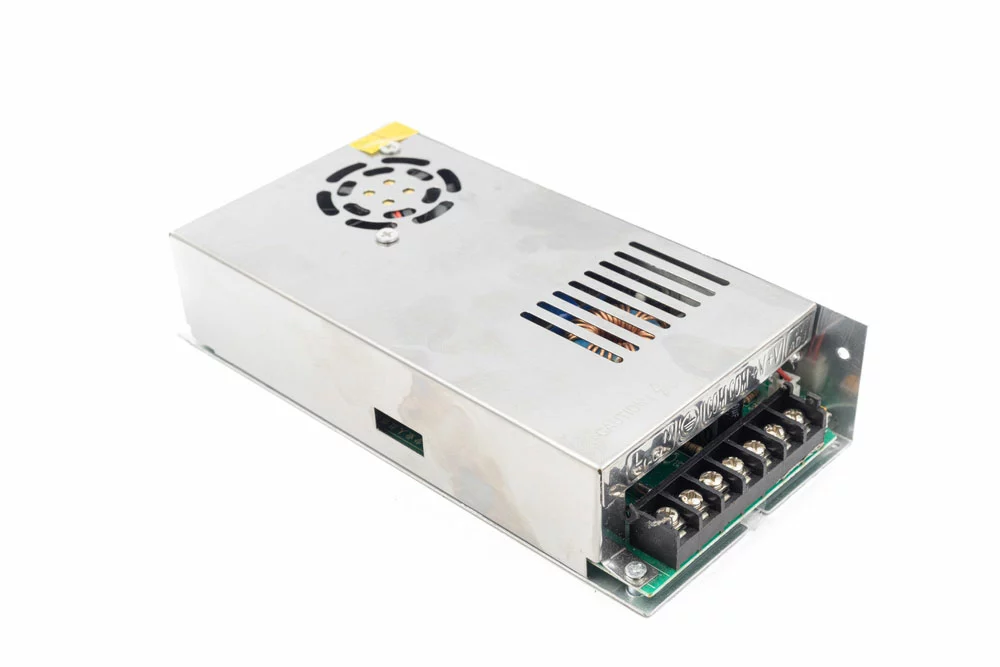
A 220V to 12V power adapter (transformer)
Voltage Drop
The voltage level decreases as it runs through a wire to power a series of lights. Since each fixture draws a small amount, the next one receives a little less voltage. This effect makes lights dimmer towards the end of the series. A 1.5-volt drop or less is acceptable, but anything beyond this value means you need a thicker wire.
Calculating Voltage Drop
Use the following formula to calculate the voltage drop your landscape lighting system will experience to avoid the issue.
((wire length x total wattage draw) / wire constant) x 2
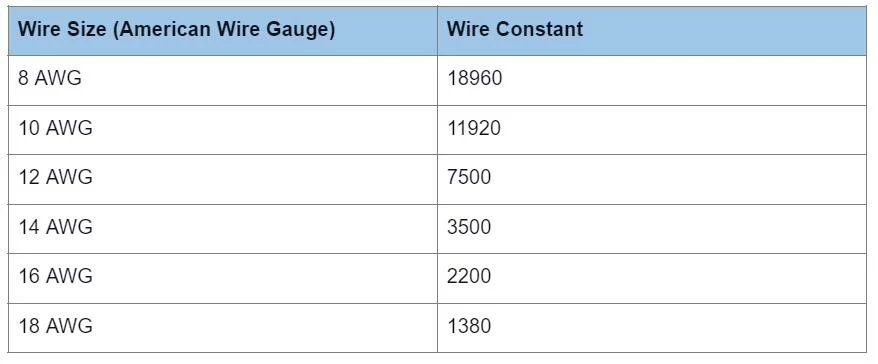
If the total wattage drawn on a line is 100W or less, a 100-ft 12-gauge wire will give a significant voltage drop.
(100 x 100 / 7500) x 2 = 2.67V
A 10-gauge wire will still be insufficient for this circuit because its drop will exceed 1.5V.
(100 x 100 / 11920) x 2 = 1.68V
However, the drop reduces to 1.05V when using an 8-gauge wire, which is acceptable.
(100 x 100 / 18960) x 2 = 1.05V
But you can use two thin wires instead of the thick one because they are easier to work with and more economical.
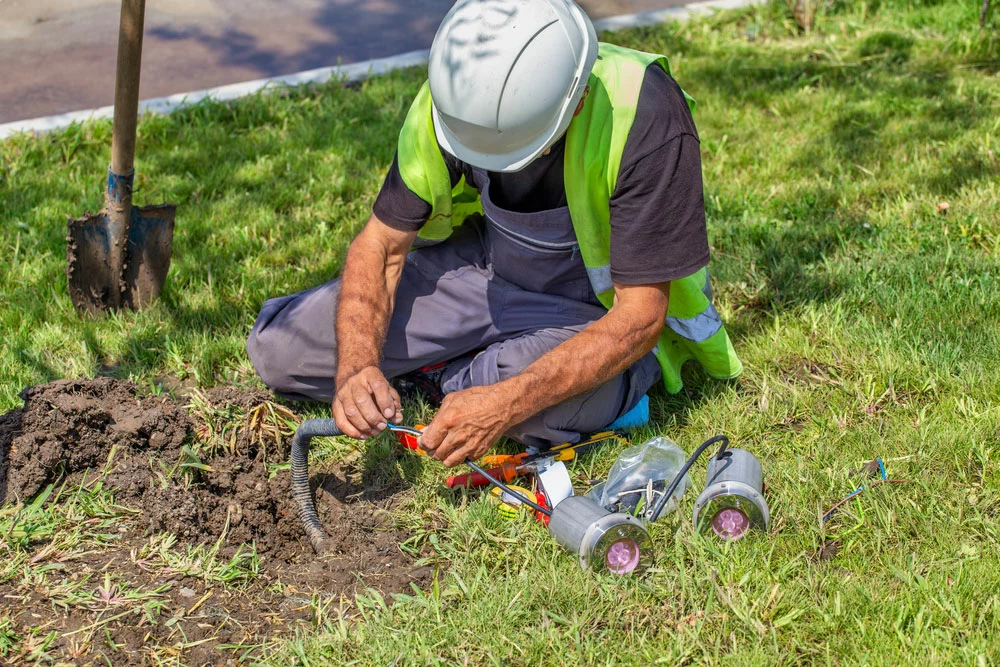
Outdoor ground spotlight installation under a tree
Wiring Methods
Once you have determined the correct low voltage wire gauge, you can wire the lights using one of the following methods.
Landscape Lighting Wire Gauge: Daisy Chain
A daisy chain is an end-to-end connection in a series of fixtures, with only one end attached to the transformer. Although it uses less wire, a daisy chain is not the best for scattered lights and can create high voltage drops.
T
T wiring is similar to a daisy chain, but the transformer location is in the middle, forming a T. The design reduces voltage drop and uses less wire.
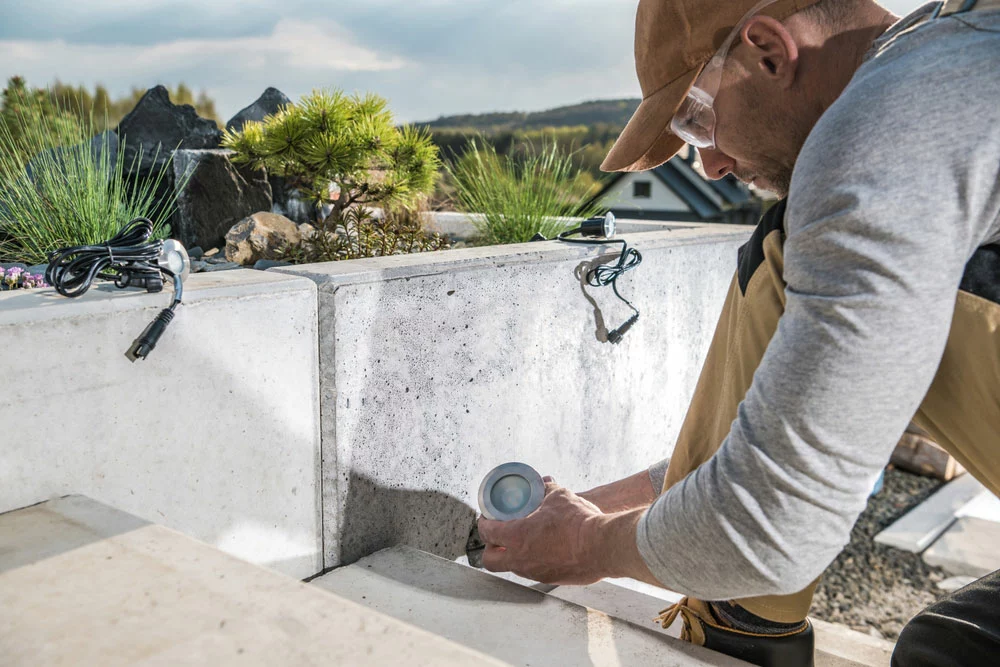
Garden landscape light wiring along concrete stairs
Hub
With this method, the main line from the transformer connects to a hub then all lights connect to this hub. Also, you can link a group of fixtures to the central point. The method uses more wire but minimizes voltage drop and the number of in-ground splices. However, the connected groups can experience voltage drops because they might draw high amounts of current. Therefore, you should calculate the voltage drop before designing the circuit.
Loop
A loop powers both ends of the series, providing a quick fix to the voltage drop issue. But it requires a lot of wire, and you must maintain the polarity between all the lights and the transformer. Also, diagnosing problems in the circuit can be challenging.
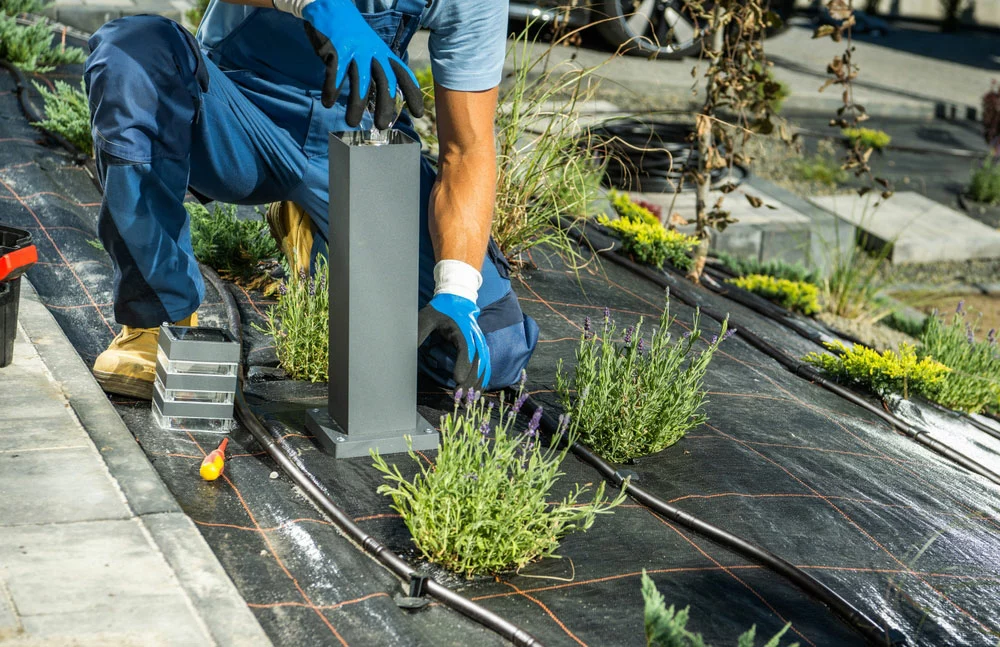
Bulb replacement on a garden light post
Split
A split is like two daisy chains. While it can minimize voltage drop as a whole, the split lines can experience a reduction in voltage further along the series.
Wrap Up
There you have it! Do not overlook the choice of wire when setting up your outdoor landscape lighting system. The best way to go about this process is to calculate the voltage drop to determine the wire gauge with the least resistance. If you have any questions or comments, contact us for more details.

